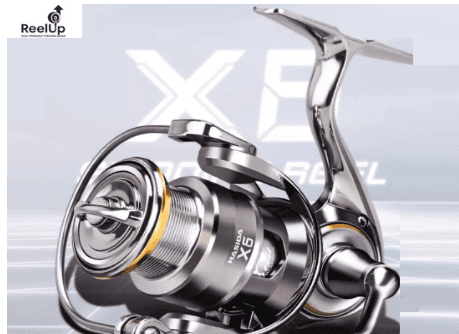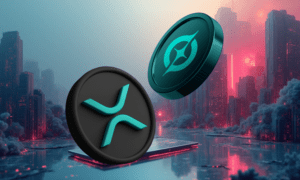In a world saturated with digital screens, the physical impact of a larger-than-life poster is undeniable. It commands attention, transforms a space, and delivers a message with a power that a 15-inch monitor simply can’t match. Whether it’s the captivating backdrop at a trade show booth, the vibrant announcement for a blockbuster movie, or the inspiring mural in a corporate lobby, large format poster printing is the engine behind these visual spectacles.
But creating a stunning large-format poster isn’t as simple as just enlarging a small image. It requires careful planning, an understanding of materials, and design principles tailored for scale. This ultimate guide will walk you through everything you need to know to navigate the world of large format poster printing and create a final product that gets noticed for all the right reasons.
The “Why”: Where Do You Use Large Format Posters?
The applications for large format posters are as vast as their sizes. Their primary role is to communicate effectively in environments where standard-sized prints would be lost.
- Marketing & Advertising: This is the classic domain. Think towering trade show graphics that draw attendees to your booth, eye-catching retail signage promoting a sale, or bold window graphics that turn a storefront into an advertisement. Event promotions for concerts, festivals, and conferences also rely heavily on large format prints to build excitement and provide information.
- Corporate & Office Use: Beyond marketing, large format printing is a powerful tool for internal branding and culture. Companies use wall murals featuring their core values or brand imagery to create an immersive environment. Informational posters with complex charts, graphs, or procedural diagrams make for effective training and communication tools.
- Education & Decoration: In schools and universities, large visual aids can make complex subjects more accessible and engaging. For personal use, the ability to turn a personal photograph into a gallery-sized piece of art or to print a custom poster for a home theater room opens up incredible decorative possibilities.
Before You Print: The Essential Planning Phase
Jumping straight into design is the most common mistake. A successful print starts with a solid plan.
- Define Purpose and Audience: Ask yourself: What is the primary goal of this poster? To sell, inform, or inspire? Who will see it, and from how far away? A poster meant to be viewed from 30 feet away at a busy convention center will have very different design requirements than one meant for a doctor’s office waiting room.
- Choose Your Poster Size: While custom sizes are always an option, common dimensions include 24″x36″ (ideal for many indoor applications), 36″x48″, and 36″x60″. Always confirm the dimensions of your display space first—there’s nothing worse than a poster that doesn’t fit its frame or stand.
- Select the Right Material: The substrate, or material, you choose dramatically affects the look, durability, and cost of your poster.
- Matte or Glossy Paper: A cost-effective choice for short-term indoor use like conference presentations or short-duration promotions.
- Vinyl: Durable, water-resistant, and versatile. Perfect for outdoor banners, long-term outdoor signs, or high-traffic indoor areas.
- Fabric: Offers a high-end, professional look and is easily transportable without creasing, making it ideal for reusable banner stands.
- Backlit Film: When placed in a lightbox, this material creates a brilliantly vibrant, illuminated display that is impossible to ignore, especially in dimly lit environments.
Design for Success: Best Practices for Large Format
This is where technical knowledge meets creativity. Designing for a billboard is not the same as designing for a brochure.
- Resolution is King: The old rule of “300 DPI” doesn’t always apply directly to large format. Because viewers are often at a distance, a resolution of 100 to 150 DPI at the final output size is often perfectly sufficient. The key is to start with the highest quality images you can. If you begin with a low-resolution image, enlarging it will only result in a blurry, pixelated mess.
- Use Vector Graphics: For logos, text, and shapes, always use vector artwork (created in programs like Adobe Illustrator). Unlike raster images (made of pixels), vectors are mathematically defined and can be scaled to any size without any loss of quality. This ensures your company logo will be razor-sharp whether it’s printed on a business card or a 50-foot banner.
- Embrace Bold Colors and High Contrast: Large format printers use CMYK color mixing. Designs that are vibrant and have strong contrast will reproduce best and remain readable from a distance. Avoid very subtle color gradients and tiny, low-contrast text.
- Keep Text Large and Legible: Apply the “10-Foot Rule.” If the most important information on your poster can’t be easily read from ten feet away, it’s too small. Use simple, bold, sans-serif fonts and ensure there is plenty of contrast between the text and the background.
- Include Bleed and Safe Zones: If your design has a background color or image that goes to the edge, you must include a “bleed.” This is typically an extra 0.125 to 0.25 inches of background on all sides that gets trimmed off after printing, ensuring no unprinted white edges. Equally important is the “safe zone”—an inner margin where all critical text and elements must remain to avoid being accidentally trimmed off.
The Printing Process & Finishing Touches
Once your design is perfected, the magic happens on the printer—and often, in the finishing department.
- Inkjet Technology: Modern large format printing is dominated by high-quality inkjet printers that use pigment-based inks for exceptional durability and color fidelity, or dye-based inks for a wider color gamut. These printers lay down ink with incredible precision, creating photorealistic images on a massive scale.
- Lamination: The Essential Protector: Lamination is the process of applying a thin, clear plastic film to the surface of your printed poster. This isn’t just an optional extra; it’s a crucial step for longevity. Lamination protects your investment from UV fading, scratches, moisture, and general wear and tear. It also enhances the visual appeal, with options ranging from a non-glare matte finish to a vibrant glossy finish, or a balanced satin.
- Mounting for Stability: To give your poster a rigid, professional presentation, it can be mounted to a substrate.
- Foam Board: A lightweight and affordable option, perfect for posters that will be placed on easels or tabletop displays.
- Gatorboard: Similar to foam board but with a harder, more durable face, making it more resistant to warping and damage.
- PVC Sintra: A rigid, lightweight plastic material that gives a very clean, professional look for permanent signage.
Working with a Printing Professional
For a result that truly stands out, partnering with an experienced printer is key. A professional team can guide you on material selection, check your files for potential issues, and deliver a finished product that reflects well on your brand. When you’re ready to bring your vision to life, providing a clear, high-resolution PDF with bleeds and a detailed list of your specifications (size, material, finishing) will ensure a smooth process.
For those seeking a partner that combines state-of-the-art technology with expert craftsmanship, large format poster printing at Shawmut Delivers offers the end-to-end service and quality you need to make a big impression.
Go Big, the Right Way
A successful large format poster is a symphony of careful planning, thoughtful design, and expert production. It’s more than just a big picture; it’s a strategic communication tool. By understanding your purpose, designing with scale in mind, selecting the right materials, and utilizing professional printing and finishing, you can move beyond simply being big to creating a piece that is truly bold, beautiful, and unforgettable.



































